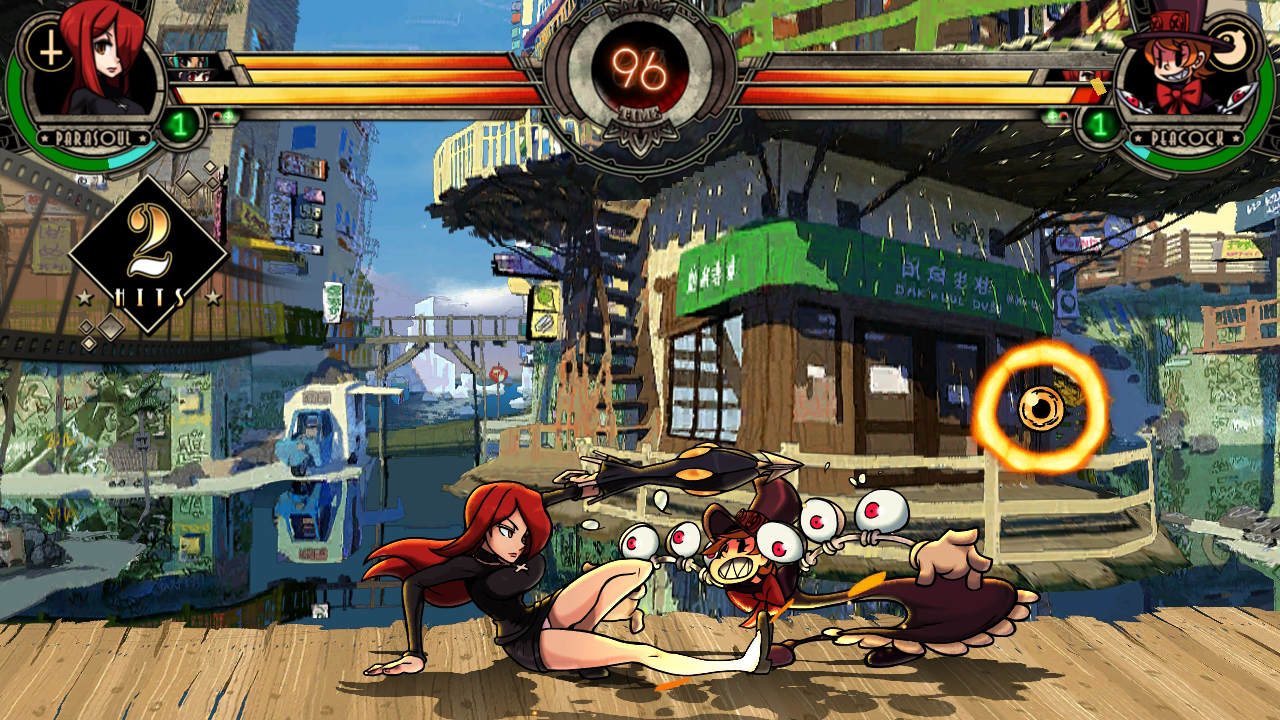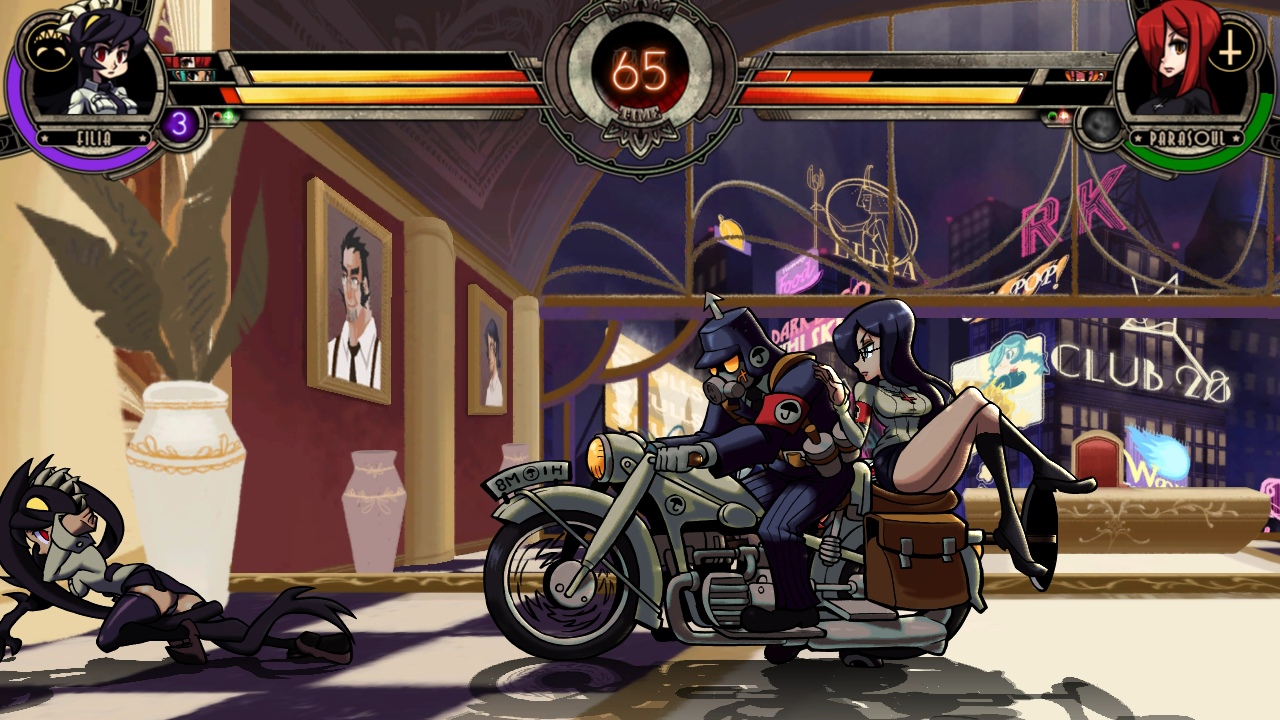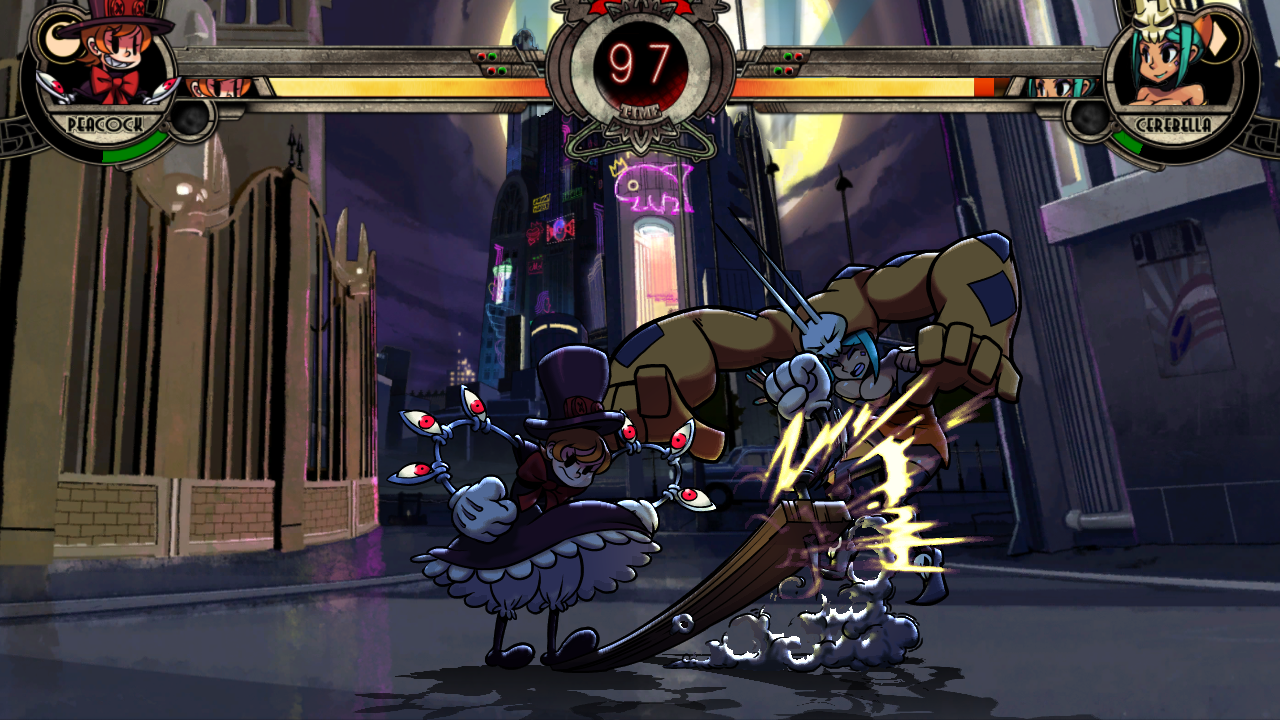Quick Search
Navigation
Featured Articles
- The Monsters of the Wailing Prison
- Strider Review
- BioShock Dev Irrational Fires All But 15 Employees
- New Titanfall Maps Confirmed
- There Are Aliens In Titanfall
- Guide: How to Dominate The Elder Scrolls Online PvP
- The Elder Scrolls Online PvP Experience
- Get Glow-in-the-Dark Condoms For Pre-Ordering InFamous: Second Son
- Batman: Arkham Origins Devs Have No Intention To Fix Bugs - Working On DLC Instead
- 8 Exclusive ESO Screenshots
Skullgirls Review
- 4-18-2012
- Categorized in: Reviews

The fighting genre has been experiencing a renaissance of sorts over the last few years thanks to games like Street Fighter IV, Mortal Kombat, and Marvel VS Capcom. All of these games have something in common, though; they are all sequels or reboots of previously established franchises. For all of the new content pouring out of the industry’s premier fighting studios, almost none of it is truly original. For this reason alone, Skullgirls was an appealing prospect when it was announced early in its development. Never mind the facts that the artwork was shaping up beautifully and that legendary composer Michiru Yamane of the Castlevania series was contributing to the soundtrack; the idea of playing a fighting game that didn’t revolve around the tried and true quarter-circle forward + punch routine was refreshing.

Now Skullgirls is finally available, and it turns out that its originality is but one of the many things that it has going for it. Skullgirls was developed with tournament play in mind, and the game is highly balanced as a result. Cheap tactics that might work in other fighting games will be useless in Skullgirls. Pesky infinite combos are a thing of the past thanks to the anti-infinite system. If you have been turned off of the fighting genre in the past because of how difficult it could sometimes be to escape from cheap, seemingly endless combos of the same move over and over again, listen up, because this feature has been implemented just for you. The game will dynamically recognize when a player is constantly spamming the same combo repeatedly, and each time it will be weakened. Eventually, it becomes a piece of cake to counter out of the attack and turn the tide of battle. This encourages thoughtful play instead of spammy button mashing.
Other little features serve to remind that this game was developed with hardcore players in mind. In order to pause the game, for instance, you must hold the Start button instead of merely tapping it. While this feature may not excite casual fans of the genre, it’s reassuring to hardcore players to know that nobody will be able to “accidentally” pause the game in the middle of an intense match. Those matches can now be waged online with confidence, as Skullgirls’ use of GGPO for online play ensures that competitive matches are smooth as can be. No longer will you have to deal with horrible lag and input delay when playing over the internet. There will still be exceptions, of course; other factors, such as the reliability of your internet connection, can always influence a match. But in the infamously inconsistent world of online fighting, GGPO is one of the most reliable ways to play.

If all of this is sailing straight over your head, don’t fret. Skullgirls features one of the most comprehensive tutorials I’ve seen in a fighting game. It begins not with complex combos or forced tutorial matches, but rather by teaching the basics of the mindset necessary to compete in the fighting genre. By teaching basic blocks and movement strategies before touching even the most basic of attacks, Skullgirls’ tutorial aims to ease new players into the genre and give them the foundations upon which to build real skill. It’s the best tutorial I’ve seen in a fighting game in recent memory.
Once you are comfortable enough with slinging around combos and pulling off screen-destroying special moves, you will notice that Skullgirls plays a lot like the classic Marvel VS Capcom 2. You can dash in the air, there are five sections of super meter, and you can snap back from enemy attacks, just like in MvC 2. There are certainly worse fighting games to base your engine off of than that classic, and the gameplay basics hold up surprisingly well today thanks to the above-mentioned updates. When fighting, you can choose to go it alone or form a team of two or three fighters. When fighting with only one character, that fighter will receive strength and health boosts. When playing with multiple characters, you will be able to call them in for quick one-off attacks in a pinch. It adds an interesting element of strategy to the battles before they have even really begun.

If there’s one downside to Skullgirls, it’s the meager roster. Only eight playable characters populate the game, and although each has their own unique style and moveset, it’s kind of disappointing to think that when you are playing a 3-on-3 match you are seeing three-quarters of the game’s roster right there in front of you. I appreciate the fact that more characters can be added later via DLC, but there’s no guarantee of that happening, and as is it’s a pretty anemic list of choices. It is also a bit odd that there is no move list to speak of. Usually in fighting games, you can pause to check out a list of each character’s attacks. No such feature is in Skullgirls, which is especially odd given the lengths that the developers went to in the name of making things player-friendly in other parts of the game.
Skullgirls may be the new kid on the block, but that doesn’t make it okay to ignore it. The developers are clearly familiar with the fighting genre and what its fans want, and they have done their best to accommodate those wants. A silky smooth fighting engine based on one of the most addictive games in the genre is complemented by great gameplay balance and wonderful online play, and a fantastic tutorial makes it easier than ever for newcomers to fight with the best of them. The roster may be a bit small, but with fighting this strong, it’s perfectly feasible to dump an unreasonable amount of time into Skullgirls and still come back for more.
Score: 9/10




